TECHNISCHE UNIVERSITÄT BERLIN, GERMANY
Course: Methods and Tools of Urban Design Block 4: Sociology and Social Research
TOPIC: Visual Analysis of Jacques Louis David Artwork – The Oath of the Horatii
written by Babatunde Oladogba
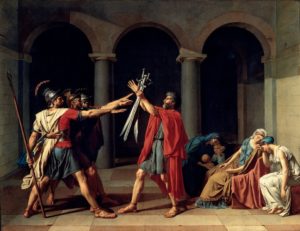
Figure 1: The whole painting – The Oath of the Horatii – Oil on Canvas, 1784
Introduction
The painting above is a historical painting by Jacques Louis David, painted in 1784 and exhibited in 1785. It was oil on canvas, 3.3 x 4.25m and it was painted in Rome. I chose this painting because it identifies various emotions, objects, and symbols that are set to be analyzed in this writing. Obviously, there have been controversial discussions and analysis of what the painting might portray and it is unclear if David’s artistic purpose in his painting was to depict the narrative from early roman history or if it’s totally different. To interpret David’s art, a deeper look and analysis of this painting may however unveil the hidden answers to what the painting might portray.
The style used by David in this painting was widely recognized throughout the western culture as “Neoclassicism”.
Analyzing the whole image, I first noticed the four agile men, three women, two children, 3 swords, a spear, a chair, a box, a tiled floor, and 3 arches way with 2 columns. My attention was then drawn to the 3 women and two kids which are on the right-hand side of the painting. I noticed that the two women resting on one another seem tense and sad. One is sitting on a long chair covered with reddish-wine cloth and the other woman in a white gown is sitting on a box, or one could call it a stool because it’s half displayed. From their sitting position, one can see their heads resting on one another, heads facing down and their hands are relaxed. Moving from these two women, I see the third woman with her two kids. My interpretation of why this woman covered her children with her hands speaks of protection. I also noticed that the woman rested her head on one of her kids while her eyes are closed. Though the two kids are still very young, I see one of the kids looking directly at the men in the middle with curiosity. This man who I think might be their father or grandfather.
The concentration of this kid on the other four men in the middle raised my thinking. Looking at this kid, one could see that he is curious and obviously doesn’t know what action the four men are performing. I also see a separation of emotion between these women and the men who appear to be getting ready for action. The emotion displayed by these four men is noticeable and one could say that they are preparing for a fight or a battle.
Analyzing further, I looked from the foot of the man holding the 3 swords, who is on a Caligae. Caligae is heavy-soled hobnailed military sandal boots widely used in the past by Roman legionary soldiers and auxiliaries throughout the Roman Republic and Empire. These sandal boots and the roman style of clothes he is wearing also speak to the kind of person he is. To me, he is obviously a soldier or a warrior.
Trying to understand the relationship between this man and the 3 other men, I observed their standing position, their clothes, and facial expression. From the pictorial structure, one can hypothesize that they are getting ready for a fight or battle as well. But to see if my personal perception was driven by the pictorial structure, it is good to do a constructive and individual examination of objects, human posture, action, and reaction in the painting, which I will analyze further.
The man in the middle holding the 3 swords forms the center of focus in this painting, one can see the 3 other men looking directly at him while trying to reach for their swords. The child on the other hand is stirring at them with a deep sense of confusion. Another determinant is the reflection of light on their body while their shadows are on the floor. Also looking deep into the background, I see shade cast by the arches, columns, and walls in the path of light, I noticed a small window to the far end on the right side of the wall with a ray of light. The body of the men and women in the foreground are well illuminated and the contrasts are sharp while the woman in blue cloth is slightly illuminated, the background, on the other hand, is more or less dark because the light is not reaching the end of the wall and the contrast is dull. The man with the 3 swords is however a dominant and a focal point. In order to analyze in more context the kind of story this painting is trying to present, I will break the painting into segments. First, I will look into them individually as an entity and then their relations to each other.
Segment 1: The man in the middle holding Swords
Looking at his structure alone, one would see that his posture is at the center of attraction. His legs are far separated, his head is equally raised to the top, and his shoulder is also raised. It is noticeable and one could see that he is holding the three swords by the blade with his left hand, while the end of the swords is separate. The second hand is also stressed out in an act of praise or offer as I assumed.
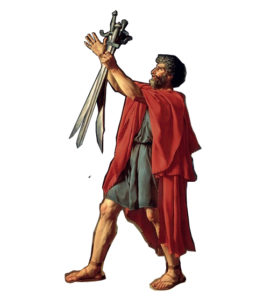
Figure 2: Segment 1- The man in the middle holding 3 swords
However, a confusing action that he displayed in this posture is why he comfortably held 3 swords in one hand without the fear of getting injured. Knowing that the swords are equally sharp is another thing to think about. He is physically standing and bending a little backward, I can see the veins in the muscle of his right leg. His look is concentrated to the top level and his neck is covered, so he obviously remains reserved and protected (see Molcho, 1985). His body is covered with light blue cloth and a red top cover. His clothes and sandal boots are typical of the Roman style mostly used by their soldiers and warriors. This type of Roman clothing was simple and elegant, practical and comfortable (see Sharon et al, 2014). Holding the 3 swords in one hand by the blades symbolized pain and risk to me.
Segment 2: The three men
In this segment, I see 3 men that are obviously ready to take action. Looking through the perspective view, I see their arms stressed out in a way that they are trying to give a salute. Another thing to question is why their raised hands present a gesture that looks like the Nazi Salute (see Martin 2009). To reference that the Nazi salute is a gesture of the raised right arm or hand in Germany, Roman and other ancient cultures that are attested in surviving art and literature had a significantly different function and is never identical to the modern straight-arm salute (see Martin 2009). On the other hand, one could argue that they are trying to collect something or trying to say a prayer. Their heads are covered in galea and they are all wearing Caligae sandals. Galea was a Roman helmet widely used by gladiators, soldiers, or warriors.
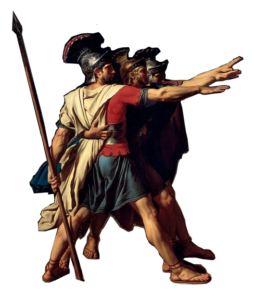
Figure 3: Segment 2- The three other men with raised hands
Furthermore, their bodies which are presenting action and dashing forward shows sign of imminent movement thereby creating tension. Their legs and arms appear Rigid with flexed muscles. It is also noticeable that the man in the middle is holding the man in the foreground by the waist which shows that there is a good relationship between the 3 men. while the man in the foreground is also holding a spear. The third man is almost not noticeable because of his position and perspective. Half of his body is covered with shade while there is a clear reflection of light on the other two men. Their bodies are all covered in garments mostly worn by military or soldiers. Following the aforementioned, I stand on the assumption that they are getting ready for a fight or battle. It is however unclear to me why only one of them has a spare and the others are not holding a spear, but together, they create undeniable anxiety.
Segment 3: The three women and the two children
It is hard to tell what exactly is going on in this segment, but one thing is visible, which is the separation of emotions. The two women in the foreground seem detached from the woman in the back. The woman in the back appears to be protecting her children by covering them. One could argue that they are trying to sleep, but to me, this is not the case, it appears to me that they are anxious and there is tension in their posture. The hand of the woman sitting on a reddish-wine stool is relaxed and she is resting her right hand and head on the left shoulder of the woman in light blue and brown garment. They obviously have a good connection. In my general analysis of this segment, I would argue that the 3 woman appears depressed and scared, the young kid who appears not to be wearing cloth is scared and the kid looking straight seems confused.
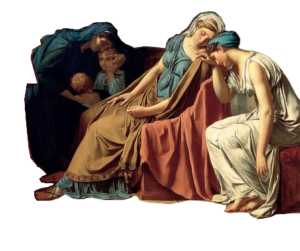
Figure 4: Segment 3- The three women and the two children
Segment 4: The three swords
What do you think of when you see a sword? Many would interpret it in different ways depending on the context. But taking this sword out of the context of the painting, I see that the design of this sword has the following features, a pommel and a grip handle, a rain-guard, a fuller in between the blades, a sharp edge, and blades. It is almost noticeable that two of the swords appears to be different from the sword in the front in term of the blade design. Another strong connection that I see is that the 3 swords have sharp and pointed ends as seen in figure 5 below.
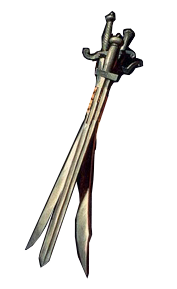
Figure 5: Segment 4- The three swords
Segment 5: The foreground and background
In the foreground, I see beauty on the floor surface, they are tiled with pattern design. In the background, I see harmony in the column and arches design. The hallway is as well celebrated with arches while the ends of the arches are supported by walls. One important thing that I also noticed is that there are 3 hallways as seen in fig 6 below. To the far end on the right-hand side, I noticed an entrance that has a small atrium above the entrance thereby allowing passage of light. The columns are painted in black color, the arches and some parts of the floor area are celebrated in light brown color.
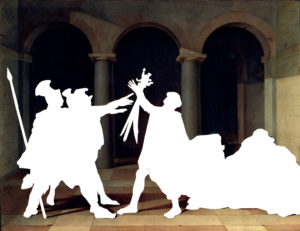
Figure 6: Segment 5- The foreground and background
Segment 6: The relationship between the whole figures
From figure 7 below, one could see that there is a separation of power between men and women. The men appear in a willingness and dominant position while the women are relaxed, the sense of clarity in space is however maximized. There is a good visual connection to the sense of colors used on clothes for all of them.
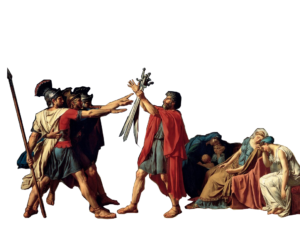
Figure 7: Segment 6- The three women and the two children
Conclusion
In view of this analysis, I asked myself again, what message was the painter trying to convey? David in this painting compares action and weakness as seen in the aforementioned discussion and figure 1 above. The women are however overwhelmed by their emotions and fear, which appear to be more conflicting. If one should think that they are family, then I would say David juxtaposed these two-family groups by dividing the canvas not only into male and female roles but contrasting the heroic and selfless with the fearful and uncertain.
It’s interesting to me that the painting also communicates a political meaning in a way that is difficult to explain.
It is unclear to me why the use of three was celebrated in the painting. 3 swords, 3 hallways celebrated with arches and columns, 3 men standing like soldiers, 3 women, and the 3 red articles of clothing. The vibrant colors also show the important parts of this painting that the artist wants us to see. Finally, I deduced that the artist wanted us to see that the man in fig. 2. above is the dominant figure in the painting and he is trying to make a decision for the other 3 men by raising 3 swords. I deduced that they were going to war or trying to fight for a position. But clearly, every figure and object in the painting contributed to the art as a whole.
Bibliography
– Martin M. Winkler (2009). The Roman Salute: Cinema, History, Ideology
– Molcha, S. (1985). Body Speech, St. Martins Press. (Accessed: 25 may 2020).
– Roswitha B. (2007). Pictured bodies- a methodical photo analysis
– Sharon R. & Tullia S. (2014). Dressing the Roman Matron of 50BCE (Accessed: 23 may 2020).
– An Art history blog. http://albertis-window.com/2017/02/oath-of-the-horatii-and-the-nazi-salute/ (Accessed: 24 may 2020).
– Caligae. https://en.wikipedia.org/wiki/Caligae (Accessed: 25 may 2020).
– Khan academy. https://www.khanacademy.org/humanities/ap-art-history/later-europe-and-americas/enlightenment-revolution/v/david-oath-of-the-horatii-1784 (Accessed: 24 may 2020).
– The art story. https://www.theartstory.org/artist/david-jacques-louis/artworks/ (Accessed: 24 may 2020).
– Sword. https://en.wikipedia.org/wiki/Sword (Accessed: 25 may 2020).
List of Figure
Figure 1: The whole painting – The Oath of the Horatii – Oil on Canvas, 1784
Figure 2: Segment 1- The man in the Middle holding 3 swords
Figure 3: Segment 2- The three other men with raised hands
Figure 4: Segment 3- The three women and the two children
Figure 5: Segment 4- The three swords
Figure 6: Segment 5- The foreground and background
Figure 7: Segment 6- The three women and the two children




